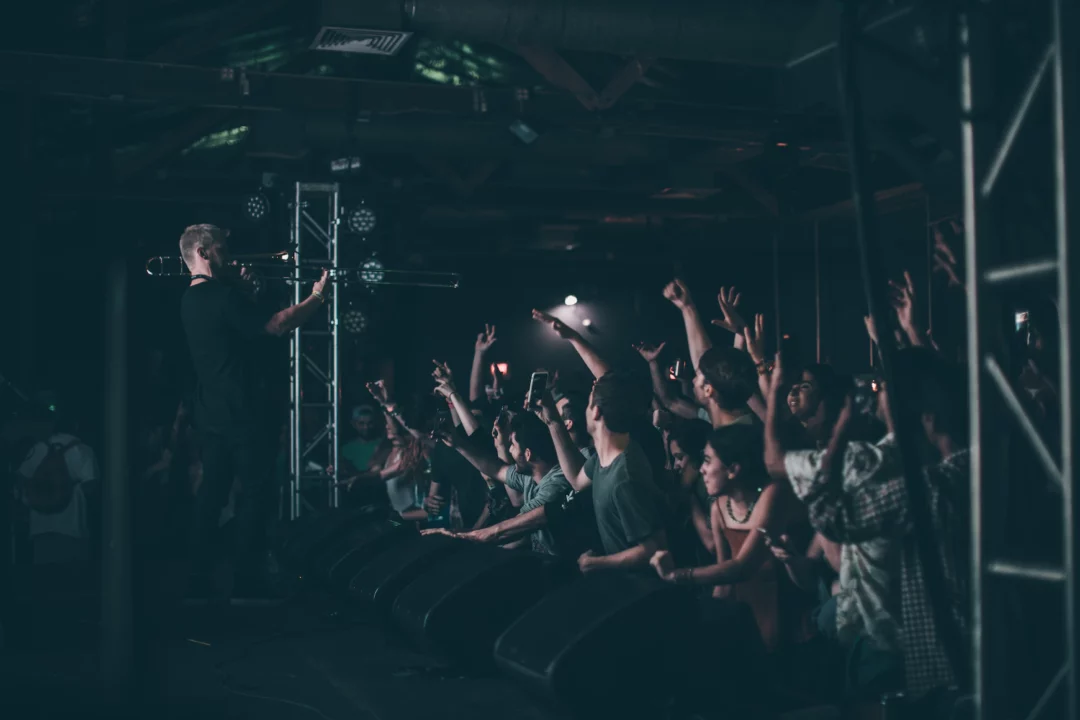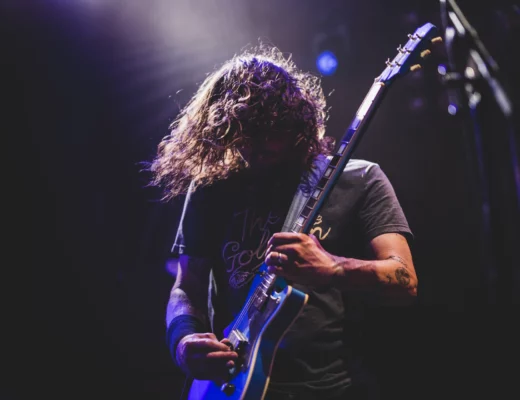Whether you have been asked by a promoter to sell tickets to an upcoming show or you have put on your own gig, there are a few golden rules on how to promote a concert you should follow to boost your attendance, and hopefully avoid every artist’s fear – playing to an empty room.
While it is true that artists are currently struggling to sell out their tour dates with 2022’s Mercury Prize winner, Little Simz forced to pull their tour due to financial constraints along with Animal Collective also struggling to budget for their tour, this isn’t a sign that you should give up the ghost just yet.
Before you put your blood, sweat, tears and own funds into playing live, make sure you are playing smart. A common mistake new independent artists make when they don’t have a band manager to push them in the right direction is playing too often in their hometown.
Times are tough, and even if you have a loyal fanbase that will do their best to support you, if you’re playing every month in your hometown, don’t expect to magically find new fans that will come out in support of you. Or that your most loyal fans will shlep from their busy lives time after time when they know that they will probably see the same show they’ve already paid their good money for.
Circle-jerk gigs are killing live music scenes up and down the country – don’t be a part of the problem! With that warning out the way, we will move on to how to effectively pull a crowd to your live dates to make sure that the attendees aren’t solely the support acts and people working at the venue.
8 Ways to Promote a Concert
1. Circulate Videos of Your Past Live Performances
We have all been to gigs after falling in love with a band’s records, only to be sorely disappointed by what the live show entails. If you thrive in the domain of live music, make it known to your fans by creating promo videos for your live dates using footage of your past shows that can be posted across your social media channels. Additionally, share any good quality fan-made videos from your last gigs and post live content to YouTube and other streaming platforms.
2. Reach Out to People Individually or Offer a Cheap List to Friends
Many independent artists boost their attending lists by offering access to a cheap list for their friends, family, and industry figures, such as journalists, photographers, and A&R reps. That personal touch can be what it takes to convert someone considering attending the show into a ticket holder. Go carefully with this approach; don’t hound people into paying for a ticket! Always use discretion.
3. Utilise Gig Listing Platforms and Publications
Many local newspapers and online music publications run features every month to let readers know what is happening in their city. Rather than sitting and hoping that your gig will be picked up by the editorial team, be proactive in your gig promotion efforts to make sure that your upcoming shows have the best chance of being noticed. Using Manchester as an example, The Skinny, All Gigs, Visit Manchester, and Manchester Gigs all promote upcoming live events, along with other national sites, such as Skiddle and Song Kick.
4. Choose a Crowd-Pulling Support Act
If you have free reign over who opens for you, decide wisely. Book a local opening act that has a proven fanbase and is willing to put the effort into pulling a good crowd. Rather than just roping in your friend’s bands in an act of nepotism, consider if your fans would want to watch this band too. After all, gig-goers are far more likely to stump up the cash for gig tickets if they think they will enjoy the entire evening, not just an hour’s worth of entertainment they will have to go out of their way for.
5. Plaster Your Gig Dates Everywhere
If you have Spotify for Artists, you can easily upload your tour dates to the platform, so the next time someone flicks through your discography, they will see all of your upcoming tour dates. As Spotify is one of the main ways music fans discover music, it makes sense to use Spotify as free advertising for your upcoming gigs. Similarly, if you have an official artist website, which every artist definitely should, all of your upcoming (and past) gigs should be listed here too.
6. Create an Event Page on Facebook
Even though you may not be able to trust who is coming to gigs via the attending and interested lists on your Facebook event pages, Facebook events are one of the best ways to circulate news of new gigs. Be sure to keep the page updated with the necessary information, such as who is opening the show and the set times. Many disagree that set times should be published as this discourages gig goers from watching all of the bands, but by publishing set times, you’re more likely to boost attendance by letting fans know how to arrange their travel plans.
7. Get to Grips with Digital Advertising
If your budget allows it, promote your gigs and tours via Facebook, Instagram and Google adverts – just be sure to set the appropriate parameters. For an efficacious digital advertising campaign via sponsored ads, ensure that you are only targeting the right geographical audience and people who have seen your posts before. For bands who can’t afford paid ads or are reluctant to use them, email marketing and using local hashtags can also increase the number of ticket-holding gig goers.
8. Don’t Rule Out Conventional Means of Advertising
Social media may dominate a worrying proportion of our daily lives, but that doesn’t mean that gig promotion solely has to happen across digital platforms. Team up with talented graphic designers to create an eye-catching gig poster that can be used online and printed and plastered across the town or city you’re playing in. Ask local businesses, such as bars and shops if they would mind putting your tour poster in their window – the worst that could happen is that they say no.
Article by Amelia Vandergast





No Comments